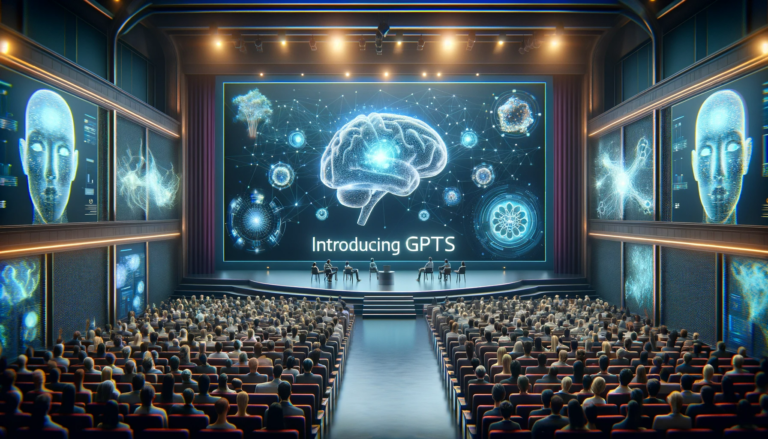
In today’s rapidly advancing technological landscape, harnessing the power of Artificial Intelligence (AI) has become increasingly valuable. This article explores the practicality of using AI to make predictions, unraveling the intricacies of this powerful tool. By understanding the principles behind AI prediction algorithms and implementing them effectively, you can unlock a wealth of opportunities and revolutionize decision-making processes. So, whether you’re an aspiring data scientist or simply curious about the potential of AI, this article will guide you through the steps of utilizing AI to make informed predictions.
Understanding AI
Artificial Intelligence (AI) refers to the capability of machines to simulate human intelligence, enabling them to perform tasks that typically require human intelligence, such as learning, problem-solving, and decision-making. In simple terms, AI aims to create machines that can think and act like humans.
Definition of AI
AI encompasses various technologies and techniques that enable machines to exhibit intelligent behavior. It involves the development of algorithms and models that enable machines to analyze vast amounts of data, identify patterns, and make predictions or decisions based on that information.
Types of AI
There are different types or subsets of AI that are commonly used, each with its own unique characteristics and applications.
- Narrow AI: Also known as weak AI, narrow AI focuses on performing specific tasks efficiently. It is designed to excel at a single task, such as facial recognition or language translation.
- General AI: General AI, also known as strong AI, aims to possess human-like intelligence across multiple domains and tasks. While still largely hypothetical, it represents the goal of many AI researchers and developers.
- Machine Learning: Machine learning is a subset of AI that enables machines to learn from data without being explicitly programmed. It uses algorithms to analyze patterns in data and make predictions or take actions based on those patterns.
- Deep Learning: Deep learning is a type of machine learning that utilizes neural networks with multiple layers to process and analyze complex data. It has been particularly successful in tasks such as image and speech recognition.
- Reinforcement Learning: Reinforcement learning involves training an AI agent through a trial-and-error process by rewarding desirable actions and penalizing undesirable ones. This technique is often used in scenarios where the optimal solution isn’t known in advance.
Importance of AI in Predictions
AI plays a crucial role in making accurate predictions in a wide range of domains. By analyzing vast amounts of data and identifying hidden patterns, AI models can provide insights and forecasts that can assist businesses, researchers, and individuals in making informed decisions. Whether it’s predicting customer behavior, stock market trends, or disease outbreaks, AI-powered predictions can help in optimizing strategies, reducing risks, and improving outcomes.
How To Use AI To Make Predictions
Before making predictions with AI, it is essential to ensure that the data provided to the model is prepared properly. Data preparation involves several steps to ensure the quality and consistency of the data.
Data Collection
Data collection is the process of gathering relevant data from various sources. This can include structured data from databases and spreadsheets, as well as unstructured data from sources like social media, sensors, or text documents. The quality and diversity of the data collected contribute to the accuracy and robustness of the predictions made by the AI model.
Data Cleaning
Data cleaning involves the process of identifying and correcting or removing errors, inconsistencies, and outliers in the collected data. This step is crucial to ensure the accuracy and reliability of the AI model. Techniques such as outlier detection, missing value imputation, and data normalization are commonly used in data cleaning.
Data Formatting
Data formatting involves transforming the data into a standardized format that can be easily understood and processed by the AI model. This can include converting categorical variables into numerical representations, encoding textual data, and scaling numerical features.
Data Labeling
Data labeling is the process of assigning meaningful labels or categories to the data. This is particularly important for supervised learning, where the AI model learns from labeled examples. Data labeling can be a time-consuming and labor-intensive task, often requiring human expertise. However, it is a critical step in training AI models for accurate predictions.

Choosing the Right AI Model
Choosing the right AI model is crucial for achieving accurate predictions. Different AI models have different strengths, limitations, and suitability for various types of problems.
Overview of AI Models
There are several categories of AI models, each suited for different types of predictive tasks.
- Supervised Learning: In supervised learning, the AI model is trained on labeled data, where the inputs and corresponding outputs are known. The model learns to predict the output based on the input features. It is commonly used for tasks such as classification and regression.
- Unsupervised Learning: Unsupervised learning involves training an AI model on unlabeled data. The model’s objective is to identify patterns or structures within the data without any pre-defined outputs. Clustering, dimensionality reduction, and anomaly detection are common tasks in unsupervised learning.
- Reinforcement Learning: Reinforcement learning involves training an AI agent to interact with an environment and learn by trial and error. The agent receives rewards or penalties based on its actions, allowing it to learn the optimal behavior. Reinforcement learning is often used in scenarios where the optimal solution is not known in advance.
- Deep Learning: Deep learning utilizes artificial neural networks with multiple layers to process and analyze complex data. It has been particularly successful in tasks such as computer vision, natural language processing, and speech recognition.
Choosing the Model based on the Problem
The choice of AI model depends on the nature of the problem and the available data. For example, if the problem involves predicting a continuous value, such as house prices, a regression model in supervised learning would be suitable. On the other hand, if the problem involves identifying clusters in customer data, an unsupervised learning model such as K-means clustering could be used. Understanding the problem and the characteristics of the data is crucial in selecting the most appropriate AI model.
Training and Testing the AI Model
Once the AI model is chosen, it needs to be trained and tested before it can be used to make predictions. This involves several steps to ensure that the model learns from the data and generalizes well to unseen examples.
Splitting the Data
The first step in training the AI model is to split the available data into two sets: the training set and the testing set. The training set is used to train the model, while the testing set is used to evaluate its performance. Typically, the data is randomly divided into a 70-30 or 80-20 ratio for training and testing, respectively.
Training the Model
During the training phase, the AI model learns from the training data by adjusting its internal parameters. The model goes through multiple iterations, or epochs, where it makes predictions on the training data, compares them to the known outputs, and updates its parameters based on the prediction errors. This process continues until the model achieves a satisfactory level of accuracy.
Evaluating Model Performance
After training, the AI model’s performance is evaluated using the testing data. Metrics such as accuracy, precision, recall, or mean squared error are used to assess how well the model generalizes to unseen examples. The performance on the testing set provides an estimate of how the model would perform in real-world scenarios.
Iterating and Refining the Model
If the AI model’s performance is not satisfactory, further iterations may be needed to refine the model. This can involve adjusting hyperparameters, such as learning rate or regularization strength, or using techniques like cross-validation to fine-tune the model’s performance. The iterative process of training, testing, and refining the model helps in achieving optimal predictive accuracy.

Feature Extraction and Engineering
Feature extraction and engineering involve selecting relevant features from the data and transforming them into a suitable representation for the AI model. This process aims to enhance the model’s predictive power by providing meaningful and informative input.
Selecting Relevant Features
Not all features in the data may be relevant for making accurate predictions. Feature selection involves identifying the most relevant features that have a significant influence on the target variable. Various statistical and machine learning techniques, such as correlation analysis or feature importance ranking, can be used for feature selection.
Handling Missing Data
Missing data is a common challenge in real-world datasets. AI models require complete data to make accurate predictions, so missing data must be handled appropriately. Techniques such as imputation, where missing values are replaced with estimated values, or exclusion of incomplete instances can be used to address missing data.
Scaling and Normalizing Features
Features in the data may have different scales or units, which can impact the AI model’s performance. Scaling and normalizing features involve transforming them into a consistent range or distribution, ensuring that they have similar magnitudes and importance. Common techniques for scaling features include standardization, min-max scaling, or logarithmic transformations.
Creating New Features
In some cases, creating new features can improve the predictive performance of the AI model. This can involve combining or manipulating existing features to extract additional information. For example, in a customer churn prediction task, creating a new feature that represents the average transaction value per month could provide valuable insights.
Applying AI for Predictions
Once the AI model is trained and the data is properly prepared, it can be applied for making predictions on new, unseen data.
Inputting New Data
The first step in applying AI for predictions is to gather and input the new data that needs to be predicted. This can include various input features or variables that the model requires to make accurate predictions.
Preprocessing the New Data
The new data needs to go through the same preprocessing steps as the training data. This involves data cleaning, formatting, and feature extraction to ensure that the input data is compatible with the trained AI model.
Feeding the Data to the Trained Model
Once the new data is preprocessed, it is fed into the trained AI model. The model applies its learned patterns and relationships to make predictions based on the input data.
Generating Predictions
The AI model generates predictions based on the input data. The predictions can be in various forms depending on the problem at hand, such as class labels, continuous values, or probability scores. These predictions represent the model’s best estimate or forecast based on the given input.
Understanding Prediction Results
To fully utilize AI predictions, it is important to understand and interpret the results. This involves analyzing the predicted outcomes, their accuracy, and any associated confidence measures. It is essential to identify any limitations or assumptions made by the AI model and assess the reliability and applicability of the predictions in real-world scenarios.
Interpreting AI Predictions
Interpreting AI predictions involves evaluating their confidence intervals, accuracy measures, and analyzing any prediction errors that may occur. This step helps in understanding the reliability and limitations of the predictions, enabling further improvements or adjustments to be made.
Confidence Intervals
Confidence intervals provide an estimation of the range within which the true value is likely to fall. AI models can provide confidence intervals for their predictions, indicating the uncertainty associated with each prediction. Understanding the confidence intervals allows for a better assessment of the reliability of the predictions.
Prediction Accuracy Measures
Various accuracy measures can be used to assess the performance of AI predictions. These measures depend on the problem type and can include metrics such as accuracy, precision, recall, F1 score, mean absolute error, or mean squared error. Analyzing these measures helps in evaluating the predictive accuracy and identifying areas for improvement.
Analyzing Prediction Errors
Prediction errors can occur due to various factors, such as incomplete or noisy data, model limitations, or inherent complexity in the problem itself. Analyzing the prediction errors can provide insights into the specific challenges and potential biases in the AI model. By understanding the sources of errors, appropriate adjustments can be made to enhance the predictive accuracy.
Adjusting Models for Enhancing Predictions
Based on the interpretation of AI predictions, adjustments can be made to the models to improve their performance. This can involve refining the feature selection process, fine-tuning hyperparameters, or considering ensemble techniques that combine multiple models for better predictions. Iteratively adjusting the AI models based on prediction results helps in enhancing their accuracy and reliability.
Handling Bias and Ethical Considerations
AI predictions are not immune to biases, as they learn from historical data that may reflect societal biases or prejudices. It is important to be aware of these biases and take steps to address them in order to ensure fairness and inclusivity in AI predictions.
Identifying Bias in AI Predictions
Bias in AI predictions can manifest in various ways, such as favoring certain demographic groups, reinforcing stereotypes, or reflecting historical imbalances. It is essential to analyze the predictions carefully and identify any biases that may be present.
Addressing Bias in Data Collection and Training
To address bias in AI predictions, steps can be taken during data collection and training. This can include ensuring diverse representation in the training data, actively attempting to correct imbalances, or incorporating fairness metrics in the training process. By addressing bias at its source, the AI models can produce more equitable and unbiased predictions.
Ethical Considerations in AI Predictions
AI predictions can have significant impacts on individuals and society, making ethical considerations essential. It is crucial to consider the potential consequences, social implications, and privacy concerns associated with the use of AI predictions. Transparency, accountability, and responsible usage are key principles to be upheld while applying AI for predictions.
Updating AI Models
AI models need to be regularly updated and refined to ensure their accuracy and relevance over time. As new data becomes available or as the problem domain evolves, the AI models must be retrained, evaluated, and adjusted accordingly.
Regular Model Retraining
As new data becomes available, it is important to periodically retrain the AI models to incorporate the latest information. This ensures that the models stay up-to-date and continue to provide accurately prediction results.
Monitoring Model Performance
Constant monitoring of the AI models’ performance is crucial. This involves evaluating the model’s accuracy, precision, recall, or other relevant metrics over time. Any deviations or decline in performance should be identified, allowing for timely actions to be taken to rectify and refine the models.
Incorporating New Data
As new data is collected, it should be properly processed and incorporated into the AI models. This helps the models adapt to changing patterns and dynamics in the data, leading to more accurate and reliable predictions.
Revalidating and Re-evaluating Predictions
As AI models are updated, it is essential to revalidate and re-evaluate the predictions they produce. This involves comparing the predictions with ground truth or real-world outcomes to assess their accuracy. By continuously validating and re-evaluating the predictions, the models can be refined and improved, enhancing their overall performance.
Challenges and Pitfalls of AI Predictions
While AI predictions offer significant benefits, there are also challenges and pitfalls to be aware of. Understanding and addressing these challenges can help in harnessing the full potential of AI for accurate predictions.
Data Quality and Availability
AI models heavily rely on high-quality and diverse data. Poor quality or biased data can significantly impact the accuracy and reliability of the predictions. Ensuring data quality and addressing data biases are ongoing challenges in AI predictions.
Overfitting and Underfitting
Overfitting and underfitting are common problems in AI modeling. Overfitting occurs when the model learns patterns that are specific to the training data but fail to generalize to unseen examples. Underfitting, on the other hand, occurs when the model is too simple to capture the underlying patterns in the data. Balancing the complexity of the model and its ability to generalize is essential to avoid these pitfalls.
Interpretability of AI Models
AI models, especially deep learning models, can be highly complex and opaque. Interpreting the inner workings of these models and understanding their decision-making processes can be challenging. Developing techniques for model interpretability is an ongoing area of research in AI.
AI Model Generalization
AI models are trained on specific datasets, and their performance may vary when applied to different datasets or real-world scenarios. Ensuring that the models can generalize well to unseen examples is crucial. Techniques such as cross-validation, transfer learning, or ensembling can help improve model generalization.
Ensuring Privacy and Security
AI predictions often rely on sensitive and personal data. Ensuring the privacy and security of this data is of utmost importance. Adhering to data protection regulations, implementing secure data handling practices, and anonymizing data when necessary are crucial considerations to protect individuals’ privacy and maintain data security.
In conclusion, understanding AI is the first step towards harnessing its power for accurate predictions. By preparing data, choosing the right AI model, training and testing the model, extracting relevant features, and interpreting the predictions, AI can provide valuable insights and forecasts. However, it is essential to address biases, maintain ethical considerations, regularly update the models, and be aware of the challenges and pitfalls associated with AI predictions. With proper implementation and responsible usage, AI has the potential to revolutionize decision-making and drive impactful outcomes in various domains.






